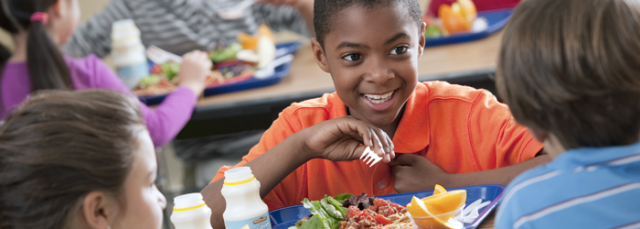 By Giovanna Reyes-Alexander
By Giovanna Reyes-Alexander
Public Health Command Region-Europe
As summer winds down, the re-opening of school may be met with mixed emotions. The opening of the new high school is an exciting event for our community, but there may be nervousness and anxiety about changing environments and moving to new grades with different teachers. The great news is that friends will be reunited, to share stories of European summer adventures or family vacations back to the Unites States.
The new school year also brings wonderful opportunities to help set our children up for their future. Part of helping them to achieve personal readiness and resiliency, is to ensure that they acquire skills they can implement to be successful. The importance of proper nutrition, is a key factor that can be taught, emphasized and practiced, so they can be confident and equipped to make healthful choices. Regardless of their age, having nutrition education contributes to making better choices, when purchasing food, selecting from the school meals program or even when bringing food from home. Wherever they obtain their lunch and snacks, there are some helpful principles to guide in menu selection as well as serving sizes.
According to the My Plate Food Guide, children and teenagers should consume meals encompassing fruits, vegetables, grains, protein and dairy. Healthy eating practices also dictate that a variety of foods from different groups be eaten whilst avoiding over-eating. Foods should also be prepared in a healthy manner to avoid excess calories and to preserve the nutrition content of the food. Eating fresh foods that are in season helps ensure that the best quality foods are consumed, at affordable prices.
A good focus for meals, especially at lunch time, is to include fruits and vegetables. Fruits and vegetables contain vitamins, minerals and fiber, and are regarded as nutrient dense versus energy dense. When purchasing food look for options that are grilled as an example instead of fried. Whole grains should also be chosen most often as they contain fiber and key nutrients such as the B vitamins. Fish, chicken, beans and peas are some foods that contain protein. Protein helps the body with growth and repair. While nuts also contain protein and healthy fats, it is important to be concerned about those around who may have nut allergies. Choose dairy products such as milk and yogurt that are lower in fat. These food contain calcium which is important for strong bones and healthy teeth.
One of the most understated best practices is drinking water. Water has zero calories, and is one of the best ways to stay hydrated whether you play sports or not. Sports drinks and energy drinks are not healthy options for children and teenagers as they supply excess sugars and may contain caffeine and other non-nutrients that can cause harm. When choosing juices, try to select 100% fruit juice or juice with no added sugar. Fruits contain natural sugars so choosing juices with no added sugar or 100% juice, is a great way to limit excess caloric intake. Remember to also limit the amount of juice consumed daily. Being mindful of how much you consume of any food is important to healthful outcomes. Do remember however that there is no substitute for eating a fresh fruit, as they supply the fiber that juice does not provide. Soft drinks and sodas should also be limited or avoided. Sodas provide no real nutritional value and are considered a major contributor to childhood obesity.
When choosing snacks, try to keep these tips in mind. Firstly, choose less sugar. The best way to accomplish this is by looking at ingredients and the labels on the snack. If choosing a cookie as an example, select an oatmeal and raisin which will contain whole grain and a dried fruit as opposed to a plain sugar cookies. Another good tip is to choose less salt and fats. This can be achieved again by paying attention to labels. Many snacks are now available with less sodium or salt. Some chips are also now baked instead of fried. Remember to make fruit and vegetables your go-to snacks. Fruit cups in 100% juice, celery sticks, baby carrots and yogurt are great snack ideas. Snacks are important for enjoyment as well as supplying energy throughout the day. They should however, be limited or eaten in moderation as they supply extra calories in the diet.
Children and teens face so many options when it comes to food in today’s society. It is sometimes difficult to make a healthy choice when bombarded by the unhealthy choices which are most times tasty, attractive and cheaper. As parents, educators and members of the community it is our responsibility to guide our children’s choices so that they make the best decisions about what they eat the majority of the time. Good nutrition is part of the foundation for a healthy disease free life. Let’s do our part to help them achieve this for themselves.
